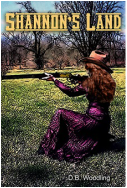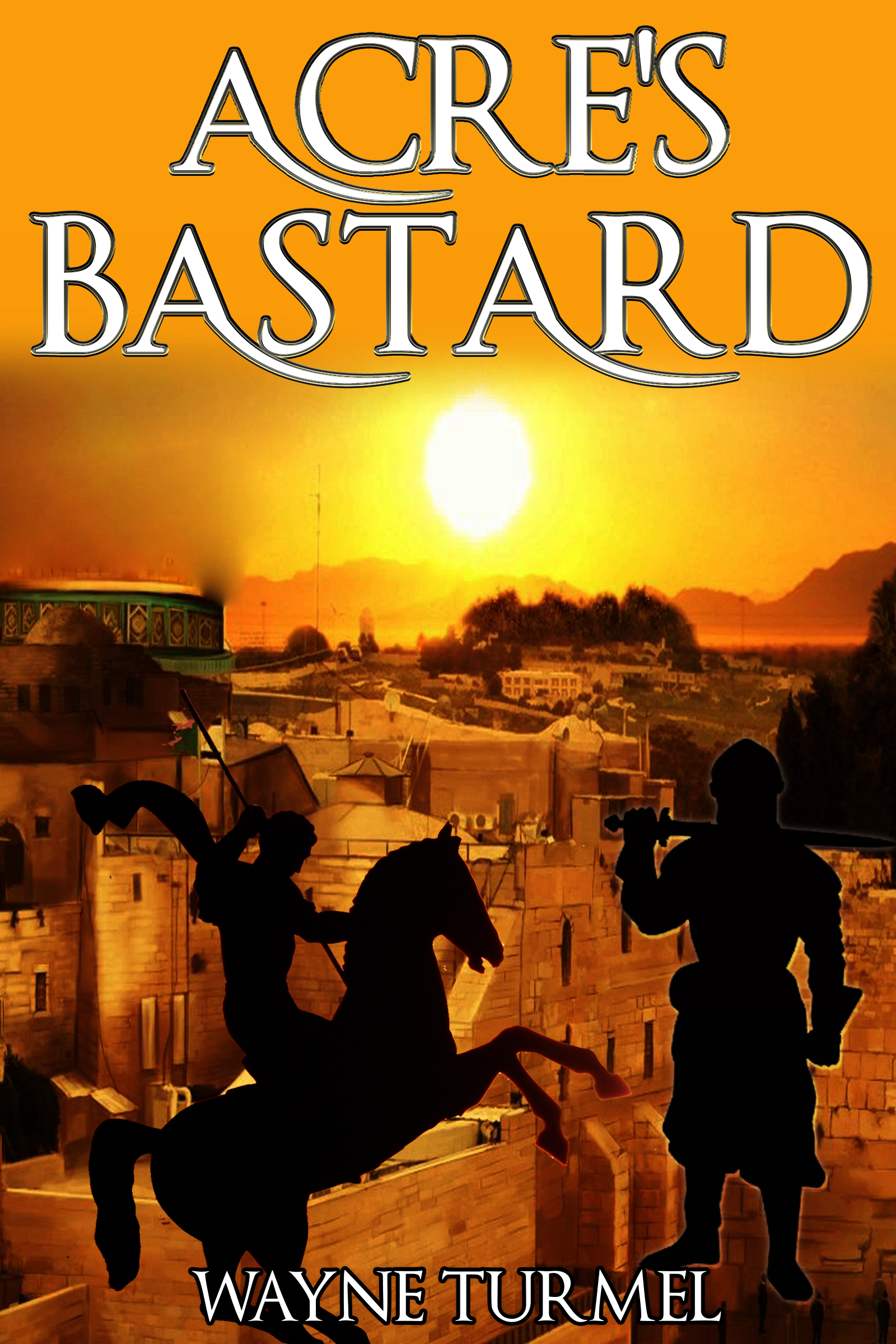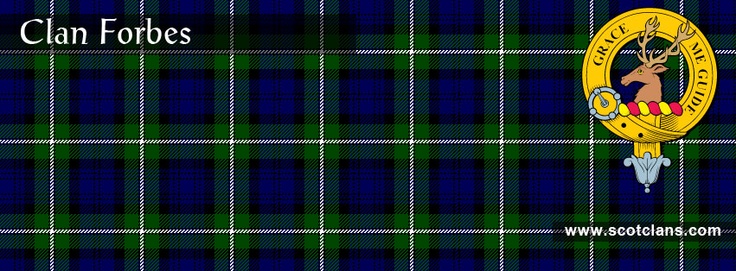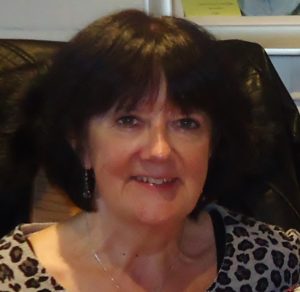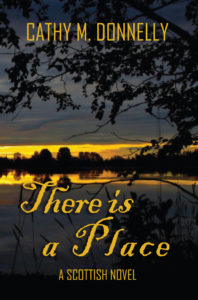I came across today’s author when I was searching for an agent. I found a very good story teller named EM Powell, and really enjoyed her first book. (As for the agent, I’m still looking, and yes that’s an obvious cry for help.) Her novel, The Fifth Knight, began life as a serial but then became one of three novels. This is her story, about her story…. you know what I mean.
E.M. Powell’s medieval thrillers THE FIFTH KNIGHT and THE BLOOD OF THE 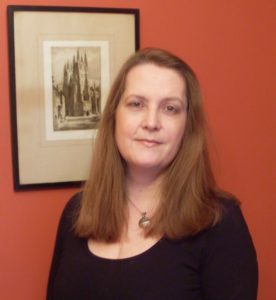 FIFTH KNIGHT have been #1 Amazon bestsellers and a Bild bestseller in Germany. Book #3 in the series, THE LORD OF IRELAND, was released in 2016. Born and raised in the Republic of Ireland into the family of Michael Collins (the legendary revolutionary and founder of the Irish Free State), she now lives in northwest England with her husband, daughter and a Facebook-friendly dog. She is also a contributing editor to International Thriller Writers The Big Thrill magazine, blogs for English Historical Fiction Authors and is the social media manager for the Historical Novel Society. Find out more by visiting www.empowell.com.
FIFTH KNIGHT have been #1 Amazon bestsellers and a Bild bestseller in Germany. Book #3 in the series, THE LORD OF IRELAND, was released in 2016. Born and raised in the Republic of Ireland into the family of Michael Collins (the legendary revolutionary and founder of the Irish Free State), she now lives in northwest England with her husband, daughter and a Facebook-friendly dog. She is also a contributing editor to International Thriller Writers The Big Thrill magazine, blogs for English Historical Fiction Authors and is the social media manager for the Historical Novel Society. Find out more by visiting www.empowell.com.
What’s “The Fifth Knight” and the series about?
THE FIFTH KNIGHT is the first of my Fifth Knight series of medieval thrillers. It’s my take on the infamous brutal murder of Archbishop Thomas Becket on the altar of Canterbury Cathedral on December 29 1170. The history with which many people is familiar is that long-standing disputes between Becket and his king and one-time friend, Henry II, had reached a critical point. Henry is said to have exploded in one of his typical rages, ending with the words: “He has…shamed my realm; the grief goes to my heart, and no-one has avenged me!” Unfortunately, a group of knights who were listening took him at his word. They set off for Canterbury to avenge their king with fatal results. In my book, I add a fictional fifth knight, Sir Benedict Palmer, to the group. And the reason they go to Canterbury is not to avenge Henry, but because they know that Becket has hidden a young nun in the walls of Canterbury Cathedral. They need to find her and the secret she holds.
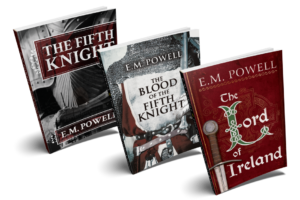 Tell me about writing the book as a serial story first, then turning it into a novel. How did that impact how you put it all together?
Tell me about writing the book as a serial story first, then turning it into a novel. How did that impact how you put it all together?
My fictional story must have appealed to some people as it has sold more than 100,000 copies worldwide. Yet it had an unusual route to publication. My publishers are Thomas & Mercer, an Amazon imprint. THE FIFTH KNIGHT was first released in the US only as a Kindle Serial back in 2012. It was published in six episodes, with each episode being delivered to readers’ Kindles every two weeks. So I had to break the story up, making sure that each episode ended on a cliff-hanger and making sure that each one balanced out. Then would come the wait to see if readers liked the new instalment. As I say, it was unusual, to say the least!
Fortunately for me, readers loved it and it was released as a complete novel in 2013. I also followed it up with the next two Palmer books in the series. In THE BLOOD OF THE FIFTH KNIGHT, Palmer is called back to find out who’s trying to kill Henry’s mistress, the Fair Rosamund. In the third, THE LORD OF IRELAND, Palmer is sent by Henry to a warring Ireland with John, Henry’s youngest son and future Bad King John. No spoilers, but John being John, all does not go well. Neither of these two books were released as Kindle Serials. The Kindle Serial program has been discontinued but all the books that were released through it are still available as complete works.
What is it about that time period that intrigues you? I mean, I share your fascination but we’re not exactly the majority…
I think that the medieval period is one of the most interesting, exciting and downright bizarre historical periods of all. It isn’t the most popular for readers of historical fiction, but I think people are missing out. What other period gives you banquets that serve peacocks, breath-taking illuminated manuscripts, gatherings with the Devil, leech collectors and chainmail?
Right? I mean frickin’ leech collectors! But I digress. What’s your favorite scene in the book?
It’s no spoiler to say Becket’s murder. ‘Favorite’ isn’t maybe the right word but it was certainly the most challenging to write. We have eye-witness accounts from the time and it was truly horrible. Becket was utterly defenseless against the armed knights. Even though I had to write it in the context of a fictional story, I had to stay true to what we know to make it credible. I actually caught myself at one point wanting to rewrite it so he got away! But this book is speculative historical fiction, rather than true alternate history, so I had to do it. I can only hope that I gave Becket the proper respect to his memory and the terrible end he suffered.
How can people learn more about you and your exciting series?
Amazon Author Page: http://author.to/EMPowell-Author
Website: www.empowell.com
Blog: http://www.empowell.blogspot.co.uk/
Facebook: www.facebook.com/empowellauthor
Twitter: https://twitter.com/empowellauthor
Goodreads: https://www.goodreads.com/author/show/6583496.E_M_Powell
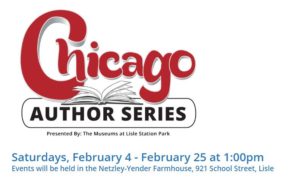 part of the Chicago Authors Series. Join us as we talk about “Putting the STORY in History- How writers turn history into great historical fiction.” I’ll also be selling and signing both my books, The Count of the Sahara and Acre’s Bastard.
part of the Chicago Authors Series. Join us as we talk about “Putting the STORY in History- How writers turn history into great historical fiction.” I’ll also be selling and signing both my books, The Count of the Sahara and Acre’s Bastard.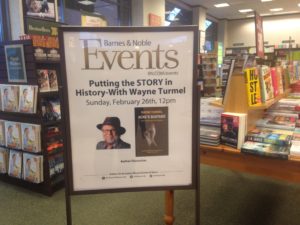 Sunday, February 26th 12-4 PM at Barnes and Noble in Downtown Naperville, IL I’ll be talking writing and reading historical fiction, then signing copies of Acre’s Bastard. B and N is anxious to support local writers, so if you’re a fan of historical fiction, or are thinking about writing it yourself, come on down. Bring your questions and book recommendations for the others. There’ll be lots of Q and A, as well as a chance to help convince Barnes and Noble that supporting local authors is good business.
Sunday, February 26th 12-4 PM at Barnes and Noble in Downtown Naperville, IL I’ll be talking writing and reading historical fiction, then signing copies of Acre’s Bastard. B and N is anxious to support local writers, so if you’re a fan of historical fiction, or are thinking about writing it yourself, come on down. Bring your questions and book recommendations for the others. There’ll be lots of Q and A, as well as a chance to help convince Barnes and Noble that supporting local authors is good business.
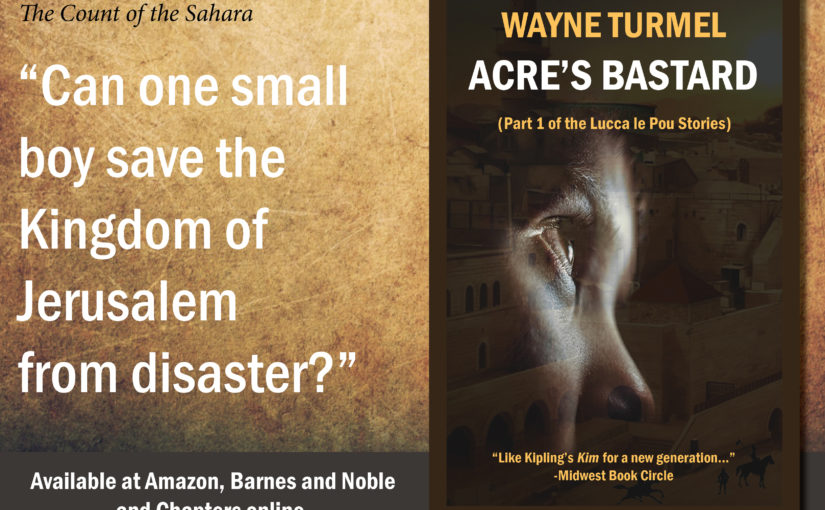
 FIFTH KNIGHT have been #1 Amazon bestsellers and a Bild bestseller in Germany. Book #3 in the series, THE LORD OF IRELAND, was released in 2016. Born and raised in the Republic of Ireland into the family of Michael Collins (the legendary revolutionary and founder of the Irish Free State), she now lives in northwest England with her husband, daughter and a Facebook-friendly dog. She is also a contributing editor to International Thriller Writers The Big Thrill magazine, blogs for English Historical Fiction Authors and is the social media manager for the Historical Novel Society. Find out more by visiting
FIFTH KNIGHT have been #1 Amazon bestsellers and a Bild bestseller in Germany. Book #3 in the series, THE LORD OF IRELAND, was released in 2016. Born and raised in the Republic of Ireland into the family of Michael Collins (the legendary revolutionary and founder of the Irish Free State), she now lives in northwest England with her husband, daughter and a Facebook-friendly dog. She is also a contributing editor to International Thriller Writers The Big Thrill magazine, blogs for English Historical Fiction Authors and is the social media manager for the Historical Novel Society. Find out more by visiting  Tell me about writing the book as a serial story first, then turning it into a novel. How did that impact how you put it all together?
Tell me about writing the book as a serial story first, then turning it into a novel. How did that impact how you put it all together?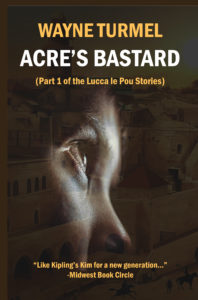 It’s January 17, 2016 so my newest historical fiction novel, Acre’s Bastard, is now available worldwide in paperback and ebook, wherever you buy such things.
It’s January 17, 2016 so my newest historical fiction novel, Acre’s Bastard, is now available worldwide in paperback and ebook, wherever you buy such things.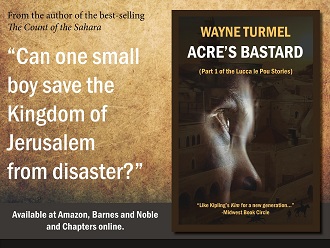
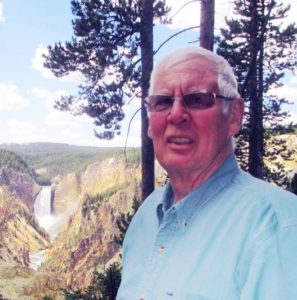 Greg Seeley was raised on a farm north of Afton, Iowa. He graduated from the University of Northern Iowa with a major in history and received his Master’s degree from the University of Iowa. He is a retired certified public accountant and lives in Overland Park, Kansas with his wife Carolyn, a retired math teacher.
Greg Seeley was raised on a farm north of Afton, Iowa. He graduated from the University of Northern Iowa with a major in history and received his Master’s degree from the University of Iowa. He is a retired certified public accountant and lives in Overland Park, Kansas with his wife Carolyn, a retired math teacher. 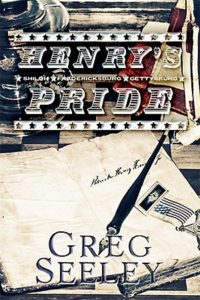

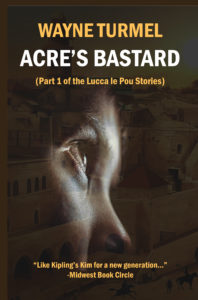
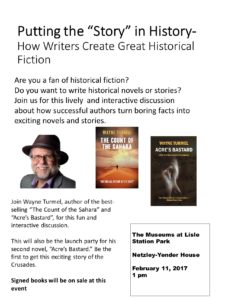

 the Thirteen Colonies who remained loyal to Britain during the American Revolution. She uses the backdrop of the conflict for page-turning fictional tales where the main characters face torn loyalties, danger and personal conflicts.
the Thirteen Colonies who remained loyal to Britain during the American Revolution. She uses the backdrop of the conflict for page-turning fictional tales where the main characters face torn loyalties, danger and personal conflicts.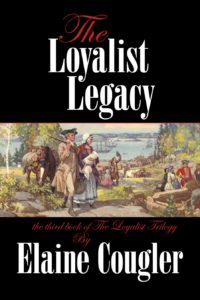 I have so many. There is one involving Catherine Garner and her ability to rise up and fight against a lynx that has come right up on her porch and grabbed a papoose from its cradle there. There is another where she is furious with William because of his treatment of his brother and in a flash of insight switches to empathy for the man she loves. I love the strength of Migisi and Kiwidinok, a Chippewa couple who represent the plight of the native peoples at this time in our North American history. And I love the scene from Lucy’s point of view at her granddaughter’s wedding and its subsequent denouement. All of these scenes and many more show the strength of these ordinary people who when circumstances demand become absolutely extraordinary. These are the ancestors of many of us lucky enough to live here now in North America.
I have so many. There is one involving Catherine Garner and her ability to rise up and fight against a lynx that has come right up on her porch and grabbed a papoose from its cradle there. There is another where she is furious with William because of his treatment of his brother and in a flash of insight switches to empathy for the man she loves. I love the strength of Migisi and Kiwidinok, a Chippewa couple who represent the plight of the native peoples at this time in our North American history. And I love the scene from Lucy’s point of view at her granddaughter’s wedding and its subsequent denouement. All of these scenes and many more show the strength of these ordinary people who when circumstances demand become absolutely extraordinary. These are the ancestors of many of us lucky enough to live here now in North America.

